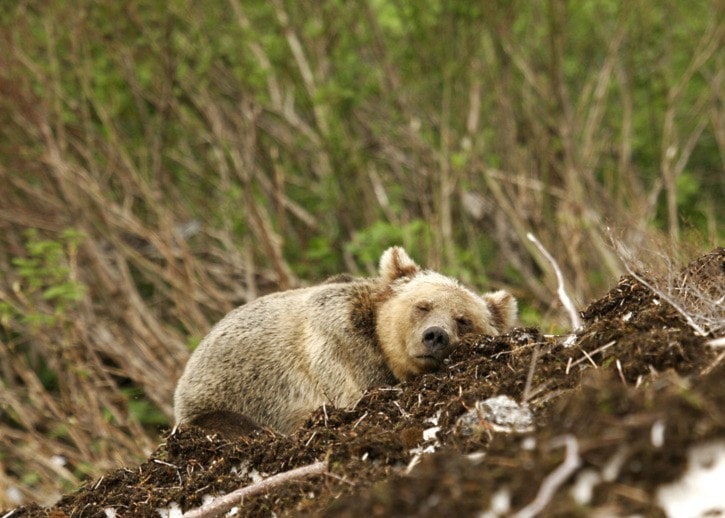When Douglas Neasloss, Resource Stewardship Director and former Chief Counselor of the Kitasoo/Xai’xais First Nation, first noticed grizzly bears on coastal islands in the Great Bear Rainforest, he was concerned. Although mainland parts of his traditional territory contained both grizzly and black bears, only black bears were known to live on the islands. Neasloss told provincial government biologists, but was dismissed because “he was not a biologist”.
Determined, he found allies in the academic world who recognized the value of this local knowledge and could meaningfully combine it with science. Today, a collaboration of wildlife scientists published a study in the international peer-reviewed journal, PLOS ONE, affirming that Neasloss was right all along.
Researchers from the Kitasoo/Xais’xais’ own Spirit Bear Research Foundation, the Raincoast Conservation Foundation, and the University of Victoria conducted a two-year survey of fourteen islands in the Great Bear Rainforest - outside the range the BC government recognizes in its management of grizzlies.
Ten islands showed evidence of resident grizzly bears. Importantly, the results showed the presence of females and young cubs, which generally move little in a given season. This suggests that grizzly bears are resident on the islands, not simply passing through. The scientists used a combination of non-invasive techniques to study grizzly bear distribution in the area. Non-invasively snagged hair provided DNA for genetic analyses, revealing the species, sex, and individual identity of bears. Remote cameras took photos of bears as they investigated the snagging stations.
Although providing critical scientific information, the two years of fieldwork would have had limited meaning without the deeper time perspective provided by the Kitasoo/Xais’xais and the neighbouring Heiltsuk First Nations. Through interviews and mapping, researchers documented an increase in sightings of island grizzly bears over the past 30 years. But cultural stories from both Nations linked grizzlies almost exclusively to the mainland.
“Our method drew from 10,000 years of place-based history and the cutting edge of genetic analyses. This let us draw conclusions with more detail, and over longer time periods, than either method could alone,” says lead author Christina Service, a PhD student at the University of Victoria and scientist with the Spirit Bear Research Foundation and Raincoast Conservation Foundation.
Douglas Neasloss argues that both the data and interdisciplinary method are important steps for First Nations to manage natural resources in their territories again.
“Our Nation acted like a responsible government should in today’s world. We solicited the best available information on wildlife. This included not only modern science but also our own knowledge. This research model increasingly empowers us to make sound decisions about bears and the other resources we steward,” says Douglas.
This research has important implications. On one hand, it suggests underlying environmental change. On the other, the presence of grizzlies on islands could trigger new land protection because provincial policy requires high quality grizzly habitat to be protected throughout the Great Bear Rainforest.
“Here we have another example of indigenous governments investing in resource management. Against a backdrop of eroding funding for, and public confidence in, the ability of provincial and federal governments to steward these ecosystems, it’s yet more evidence of the sweeping changes to how resources will be managed in the future”, says Dr. Chris Darimont, Science Director at Raincoast and Hakai-Raincoast professor at the University of Victoria.
Additional authors on this study include Kyle Artelle of Simon Fraser University and Raincoast Conservation Foundation, Laura Grant of the University of Victoria and Spirit Bear Research Foundation, and Megan Adams and Paul Paquet who hold appointments at the Raincoast Conservation Foundation and the University of Victoria.
